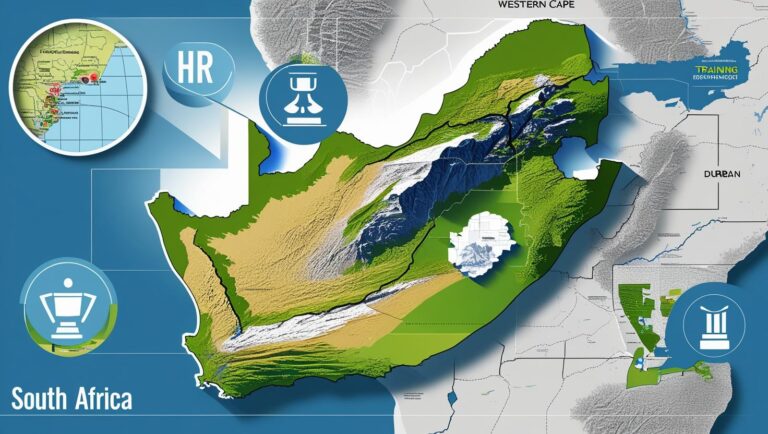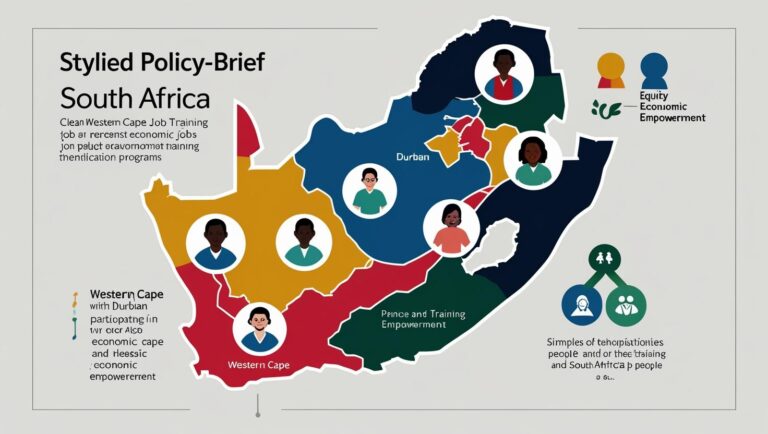Employment Equity and Small Businesses: What You Need to Know
When most small business owners hear the term Employment Equity, it often triggers a mix of confusion, anxiety, or a quiet assumption that it’s only relevant for corporates. The idea of drafting plans, analysing workforce demographics, and submitting government reports can feel overwhelming — especially if your HR function is handled by one person, or even by yourself.
But here’s the truth: Employment Equity (EE) affects far more businesses than most people realise. Even if your company is small, understanding your responsibilities and opportunities under the Employment Equity Act (EEA) can provide strategic advantages. EE isn’t just about compliance or ticking boxes — it’s about building a workplace where diversity, fairness, and opportunity are intentional.
In this article, we’ll break down what Employment Equity is, who needs to comply, what small businesses often get wrong, and how you can engage in equity strategically — without drowning in paperwork.
What is Employment Equity?
Employment Equity is a legal framework in South Africa designed to address historic imbalances and systemic discrimination in the workplace. At its core, EE is about creating fair access to employment and advancement opportunities, particularly for what the law calls designated groups. These include black people, women, and persons with disabilities.
The goal of EE is not simply to meet quotas or fill forms. It’s about building workplaces where diversity is intentional, not accidental. EE ensures that policies, practices, and workplace systems are free from unfair discrimination and that all employees have an equitable chance to succeed.
The Employment Equity Act (EEA) governs this process, and the Department of Employment and Labour monitors compliance. While EE reporting is mandatory only for certain employers, even small businesses can benefit from integrating its principles into their culture and operations.
Who Needs to Comply?
Not every business is legally required to submit Employment Equity reports. Compliance depends on whether you are classified as a Designated Employer under the EE Act.
A Designated Employer typically meets one of the following criteria:
Employs 50 or more employees.
Has an annual turnover above a threshold determined by sector, even if the workforce is smaller than 50.
Is a municipality, organ of state, or a large company such as a JSE-listed business.
If you fall into this category, you must:
Develop and implement an EE plan
Conduct annual workforce analysis
Submit EE reports (EEA2 for progress, EEA4 for income differentials)
Be prepared for audits on compliance
Sector Thresholds Matter
Even if your business has only 15 or 30 employees, turnover can trigger compliance requirements. Each industry has its own threshold. For example:
Wholesale and retail: R30 million turnover
Manufacturing: R50 million turnover
These thresholds are updated periodically, so it’s important to check the latest regulations for your sector.
What If You’re Not a Designated Employer?
If your business doesn’t meet the criteria, you are not legally required to submit EE reports. That said, there are still strong reasons to engage with employment equity voluntarily:
You may plan to grow, and early preparation avoids last-minute scramble when you hit the thresholds.
Many government and corporate tenders require proof of EE policies or principles.
EE initiatives can improve your BBBEE scorecard, which affects credibility and market opportunities.
Even without legal obligation, adopting EE practices fosters fairness, inclusivity, and a workplace culture that attracts talent.
In short, Employment Equity should not be approached with fear. It’s about creating systems and practices that reflect your values, prepare your business for growth, and align with the realities of South Africa’s workforce.
What Does EE Require You to Do?
If you are classified as a designated employer, EE compliance involves a structured process. While it might seem complex initially, understanding each step makes it manageable.
1. Assign an EE Manager or Responsible Person
Your business doesn’t need a full-time HR department. Even small businesses can designate an internal EE champion — this could be the HR lead, the owner, or a dedicated staff member. Their role is to coordinate the EE process, liaise with employees, and ensure reporting deadlines are met.
2. Conduct a Workforce Analysis
The first substantive step is understanding your current workforce. This involves analysing representation across occupational levels, considering race, gender, and disability.
For example, you may discover that while women are well-represented in administrative roles, management or technical positions remain male-dominated. This insight forms the foundation of your EE plan.
3. Consult with Your Team
Employment Equity isn’t a top-down process. Consultation with employees — particularly those from underrepresented groups — is essential. Many businesses establish a consultative forum or a representative committee.
This consultation ensures that your EE plan reflects real challenges, captures employee perspectives, and sets realistic goals. For instance, a small manufacturing business might learn through consultation that female employees would benefit from mentorship and leadership development programs, which could become part of the EE plan.
4. Draft and Implement Your EE Plan
An EE plan typically spans 1–5 years and outlines specific measures to improve workforce representation and equity. Key components include:
Recruitment strategies to attract designated groups
Development programs for underrepresented employees
Policies to eliminate discrimination and bias
Targets for occupational levels
The plan is a roadmap for making measurable progress, not just a document to file.
5. Submit EE Reports Annually
EE compliance requires submitting two main forms to the Department of Labour:
EEA2: Employment Equity progress report
EEA4: Income differentials report, highlighting pay gaps
These reports are usually due by 15 January of each year. Submitting accurate, timely reports ensures compliance and positions your business as responsible and transparent.
Common Mistakes Small Businesses Make
Even businesses eager to comply can stumble. Understanding common pitfalls helps you avoid unnecessary headaches:
Assuming EE only matters when you’re “big”: Turnover thresholds or sudden growth can trigger compliance unexpectedly.
Copy-pasting templates without consultation: A generic plan rarely reflects your business realities. Consult employees to ensure your goals are relevant and achievable.
Ignoring income gap analysis (EEA4): Failing to assess pay differentials can result in negative audits and missed opportunities to improve fairness.
Overlooking turnover triggers: Remember, EE compliance isn’t only about headcount.
Seeing EE as paperwork, not strategy: Treat EE as a tool for real change, not just a form to tick.
Why EE Matters Beyond Compliance
Employment Equity is often misunderstood as purely a compliance exercise. In reality, it can be a strategic lever for your small business:
Creating meaningful access to employment: EE ensures talented individuals from all designated groups have opportunities to contribute.
Addressing legacy barriers: South Africa’s workforce has historical inequalities. EE programs actively work to remove systemic obstacles.
Building a future-ready team: Inclusive practices improve retention, morale, and the diversity of ideas — all critical for business growth.
Enhancing your brand: Businesses known for equitable practices attract talent and customers who value fairness.
For example, a small IT startup that intentionally recruits women and persons with disabilities for technical roles may discover innovative perspectives and solutions that would otherwise be absent. This is not just compliance — it’s building capability and resilience.
How to Approach EE Without Getting Lost
Even small businesses can engage with EE in a structured, manageable way. Here’s a practical approach:
Start small. Begin with internal audits to understand workforce composition. Identify gaps and discuss with your team. Then, draft a simple, realistic EE plan that addresses the most pressing areas. Implement initiatives gradually rather than trying to change everything overnight.
Documentation is key. Keep clear records of your workforce analysis, consultations, policies, and interventions. Even modest efforts demonstrate intent and progress — which matters for reporting and audits.
Focus on outcomes. Employment Equity should result in tangible improvements: promotions, mentorships, training programs, and fair pay adjustments. By concentrating on measurable outcomes, your EE plan becomes a tool for development, not just bureaucracy.
Seek support. Leverage HR advisors, SETAs, or industry peers to clarify obligations, review your plans, and ensure compliance. External guidance can prevent common errors and make the process more approachable.
Final Thoughts: Better to Prepare Early
Employment Equity may seem daunting, especially for small business owners or HR leads managing multiple responsibilities. But early preparation pays off. Even if you are not yet a designated employer, understanding the EE framework positions you for growth, tender opportunities, and a future-proof workforce.
EE is not a punishment or a bureaucratic burden. Done intentionally, it reflects your business values, strengthens your team, and contributes to a fairer workplace. Start with understanding your obligations, consult with your employees, and develop practical initiatives that make a real difference.
By engaging with Employment Equity strategically, even a small business can build an inclusive, fair, and thriving workplace. Compliance becomes a natural part of your operations, and your business becomes stronger, more resilient, and ready for the opportunities that come with responsible, forward-thinking HR practices.



